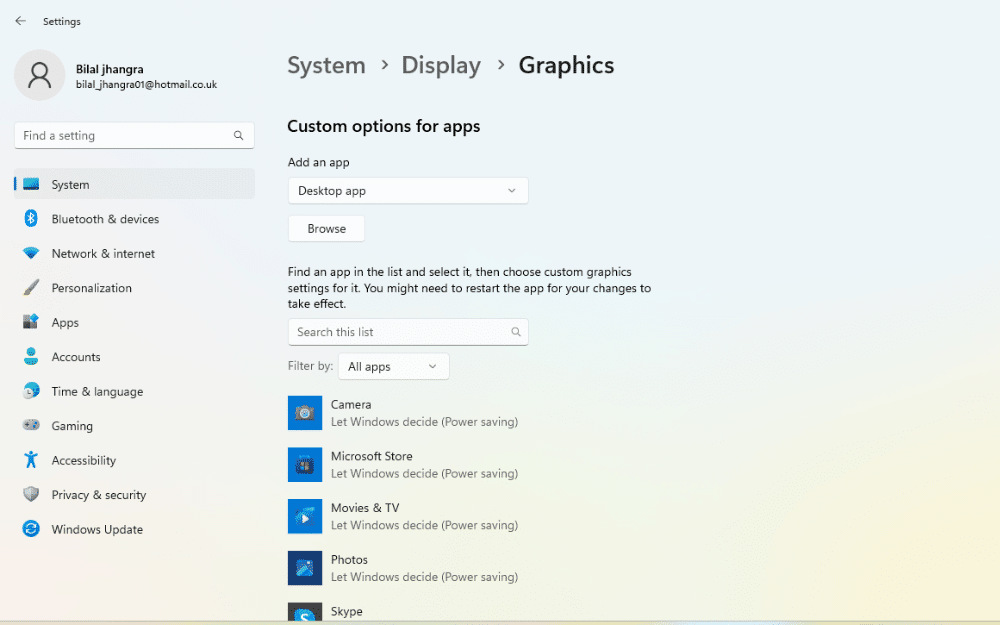Graphics quality is one of the most important factors that affect your gaming experience and enjoyment. Whether you are playing a fast-paced shooter, a realistic simulation, or a stunning adventure, you want your games to look as good as possible on your screen.

However, not all PCs or laptops have the same graphics capabilities, and some may struggle to run the latest and most demanding games at high settings. If you are looking for ways to improve graphics quality on your PC or laptop, here are some tips and tricks that you can try.
How to Improve Graphics Quality
Update your graphics drivers
One of the easiest and most effective ways to improve graphics quality on your PC or laptop is to update your graphics drivers. Graphics drivers are software that communicate with your graphics card and allow it to render the images on your screen.

Updating your graphics drivers can improve the performance, stability, and compatibility of your graphics card, and fix any bugs or issues that may affect your graphics quality. You can update your graphics drivers manually by visiting the website of your graphics card manufacturer, such as Nvidia, AMD, or Intel, and downloading and installing the latest driver for your model.
Alternatively, you can use a driver updater tool that can automatically scan your system and update your drivers for you.
Adjust your graphics settings
Another way to improve graphics quality on your PC or laptop is to adjust your graphics settings in the game or in the graphics control panel. Graphics settings are options that allow you to customize how the game looks and runs on your system. Some of the common graphics settings are resolution, anti-aliasing, texture quality, shadow quality, ambient occlusion, etc.

Each of these settings has an impact on both the graphics quality and the performance of your game. Generally speaking, higher settings result in better graphics quality but lower performance, while lower settings result in worse graphics quality but higher performance. Therefore, you need to find a balance between the two that suits your preferences and system capabilities.
You can adjust your graphics settings in the game by accessing the options or settings menu and choosing the graphics or video tab. You can also adjust your graphics settings in the graphics control panel by right-clicking on your desktop and selecting Nvidia Control Panel, AMD Radeon Settings, or Intel Graphics Settings.
Upgrade your hardware
If updating your drivers and adjusting your settings are not enough to improve graphics quality on your PC or laptop, you may need to upgrade your hardware. Hardware is the physical component of your system that determines its performance and capabilities.
The most important hardware component for graphics quality is the graphics card, which is responsible for processing and displaying the images on your screen. Upgrading your graphics card can significantly improve graphics quality on your PC or laptop, as it can handle more complex and detailed graphics and run games at higher resolutions and frame rates.
However, upgrading your graphics card can also be expensive and complicated, as you need to consider factors such as compatibility, power supply, cooling system, etc. Therefore, before upgrading your graphics card, you should do some research and consult an expert if possible.
Other hardware components that can affect graphics quality are the CPU (central processing unit), RAM (random access memory), SSD (solid state drive), monitor, etc. Upgrading these components can also improve graphics quality on your PC or laptop by boosting the overall performance and speed of your system.
Use external tools
Another way to improve graphics quality on your PC or laptop is to use external tools that can enhance or optimize your games. External tools are software or applications that can modify or improve the graphics or performance of your games. Some of the popular external tools that can improve graphics quality on your PC or laptop are:
- GeForce Experience: This is a tool that is designed for Nvidia users, and it can automatically optimize your games based on your system specifications and preferences. It can also update your drivers, record and stream your gameplay, and enable features such as Ansel, Freestyle, and DLSS.
- Radeon Software: This is a tool that is designed for AMD users, and it can also automatically optimize your games based on your system specifications and preferences. It can also update your drivers, record and stream your gameplay, and enable features such as Radeon Boost, Radeon Anti-Lag, and Radeon Image Sharpening.
- Game Booster: This is a tool that is designed for any user, and it can improve your gaming performance by freeing up system resources, closing unnecessary processes, and optimizing system settings. It can also monitor your system temperature, fan speed, and FPS.
Here are the Best GPU for a Gaming Laptop 2023 – Unleashing Power & Performance
Final Thoughts
Graphics quality is a key factor that influences how much you enjoy playing games on your PC or laptop. By following these tips and tricks, you can improve graphics quality on your PC or laptop and enhance your gaming experience.
However, you should also remember that graphics quality is not the only thing that matters in gaming, and you should also consider other aspects such as gameplay, story, sound, etc. Ultimately, the best way to enjoy gaming is to have fun and immerse yourself in the virtual world.
FAQs –
How can I improve my laptop graphics?
Update Graphics Drivers: Ensure your graphics drivers are up-to-date. Visit the manufacturer’s website (e.g., NVIDIA, AMD, or Intel) to download and install the latest drivers for your GPU.
Adjust Graphics Settings: In many games and applications, you can tweak graphics settings to balance performance and visual quality. Lowering settings like resolution, texture quality, or anti-aliasing can often improve performance.
Clean Your Laptop: Overheating can negatively affect graphics performance. Keep your laptop clean by removing dust from the vents and ensuring proper airflow. You may also consider using a laptop cooling pad.
Upgrade Hardware: If your laptop allows for it, you can upgrade certain hardware components. Upgrading RAM can help with overall system performance while upgrading to a more powerful GPU can significantly boost graphics capabilities.
Use External GPU (eGPU): Some laptops support external GPUs. If your laptop has a Thunderbolt 3 or USB-C port with eGPU support, you can connect an external GPU for better graphics performance.
Close Background Apps: Ensure that unnecessary background applications are closed to free up system resources, which can improve graphics performance.
How do I fix bad graphics on my computer?
Update Graphics Drivers: As mentioned earlier, make sure your graphics drivers are up-to-date to resolve compatibility issues and bugs.
Check Display Settings: Adjust your screen resolution and refresh rate to ensure they are set correctly for your monitor. Right-click on the desktop and go to Display Settings in Windows.
Adjust Application/Game Settings: Within specific applications or games, you can often customize graphics settings to improve visual quality. Lowering settings can help if your hardware is struggling to handle higher settings.
Scan for Malware: Malware or viruses can affect system performance, including graphics. Run a full system scan with reliable antivirus software.
Clean Your Computer: Dust and debris can accumulate inside your computer and affect cooling, which can lead to performance issues. Clean the interior of your computer and ensure proper airflow.
Monitor GPU Temperature: Use software like MSI Afterburner or HWMonitor to monitor your GPU temperature. Overheating can lead to degraded graphics performance; consider better cooling solutions if temperatures are too high.
Why are my laptop graphics bad?
Outdated Drivers: Old or incompatible graphics drivers can lead to bad graphics. Update your GPU drivers regularly.
Low Hardware Specifications: Laptops with low-end or integrated graphics may struggle with modern applications and games that demand more graphical power.
Overheating: Laptops can overheat due to dust buildup or inadequate cooling solutions, causing throttling and reduced graphics performance.
Software Issues: Malware, bloatware, or corrupted system files can negatively impact graphics performance.
Background Processes: Running too many background processes or applications can use up system resources, leaving less for graphics.

